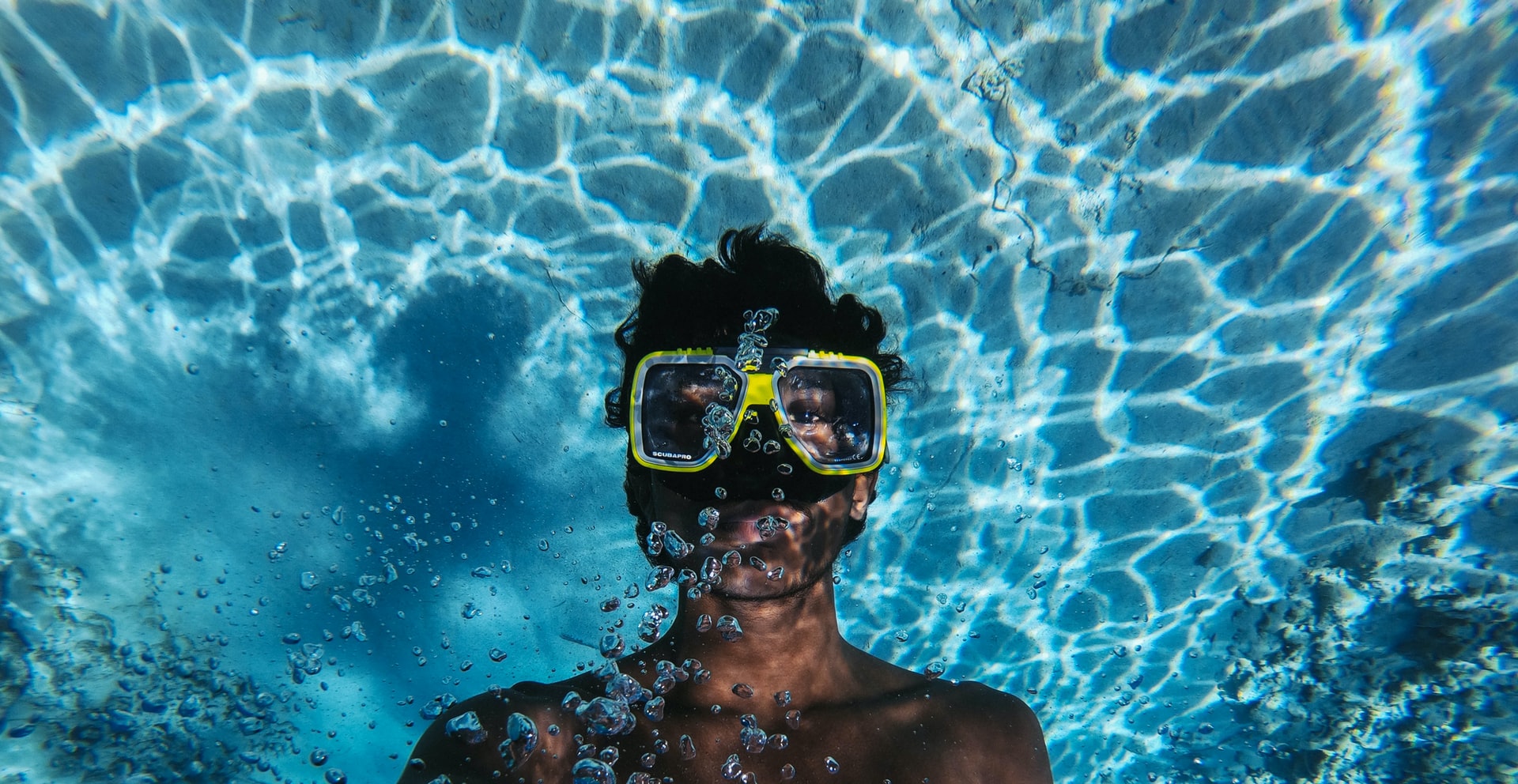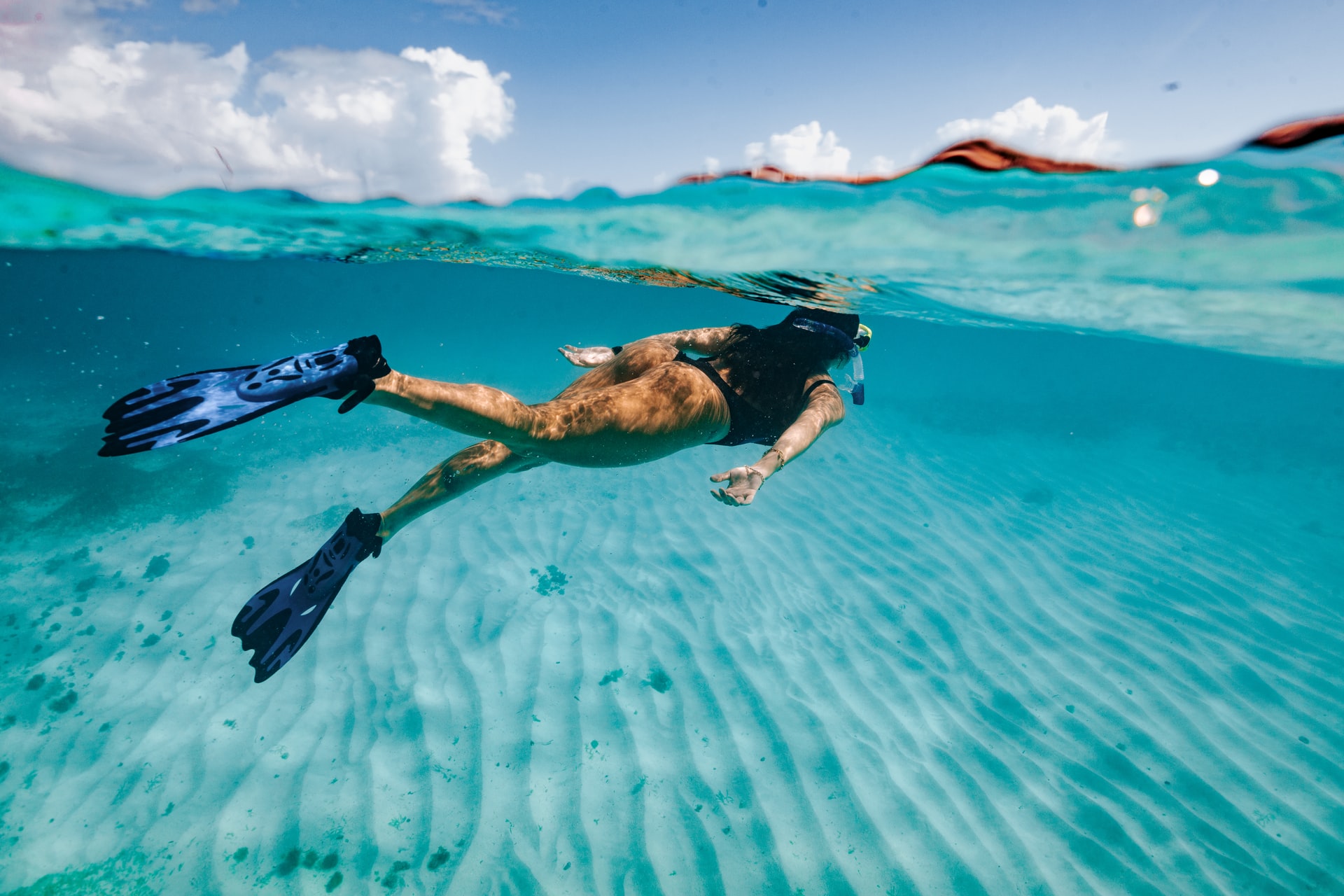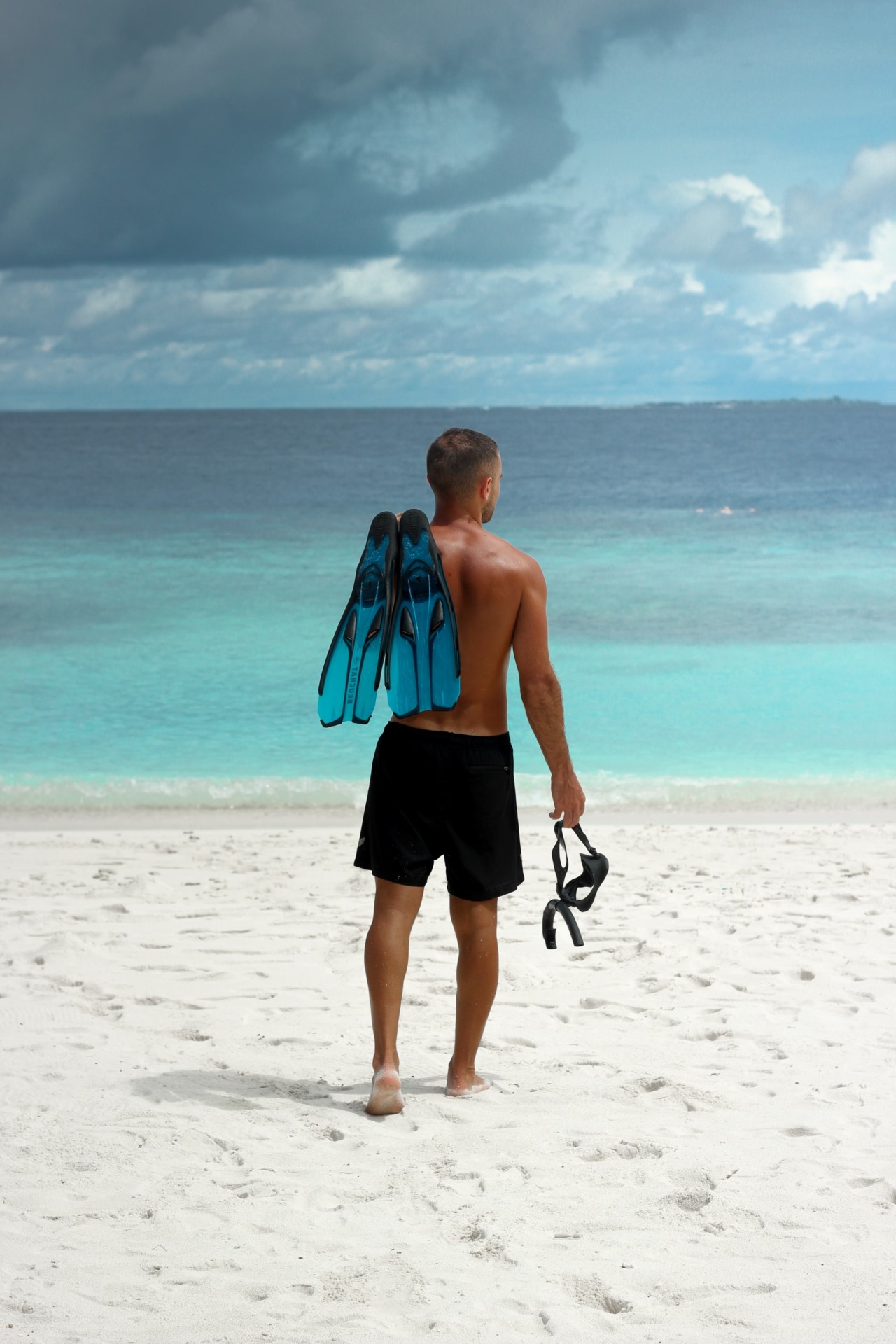When you go snorkeling, you’re going to get wet, so surely it doesn’t matter if it’s raining?
Ok, so it might be annoying as you’re traveling to and from the site, but when you’ve got your face in the water, isn’t it reasonable to think that you won’t notice a bit of rain?
You might be surprised to learn that rain can make snorkeling visibility worse in a few different ways.
We’re going to look at how visibility can be impacted and see if there’s anything you can do to minimize the impact on your day.
- 4 Ways That Rain Can Affect Visibility When Snorkeling
- Does the Strength of the Rainfall Play a Role?
- Does Rain Affect Underwater Life?
- What Should I Do if Rain Is Forecast?
- Do You Need a Snorkel With a Valve to Snorkel in the Rain?
- Conclusion
- You Might Also Like…
Disclosure: this post contains affiliate links (clearly marked with ), which means we may earn a commission if you buy something through them, at no additional cost to you.
4 Ways That Rain Can Affect Visibility When Snorkeling
If it’s just raining gently, then once your face is in the water with your mask and snorkel, you probably won’t notice much.
It’s entirely possible not to realize it’s raining a little bit if it starts when you’re already snorkeling.
However, some effects caused by rain can make the visibility poorer and your snorkeling less enjoyable.
1. Runoff Particles
If you’re going to be snorkeling in the ocean close to the shore or in a freshwater lake, you’ll notice a reduction in visibility caused by runoff when it rains.
Runoff is where the rain carries particles from the shore like mud, sand, or other debris into the water and causes cloudiness.
It can also occur if a stream, river, or drain flows into the water you want to snorkel in.
The runoff can badly reduce visibility, making snorkeling close to the shore and the source of the cloudiness considerably less enjoyable.
Depending on the location, this cloudiness can last for a day or two.
So if it’s been raining heavily, you might want to delay your trip even if the forecast is good for the next day.
However, shore sites close to open, deep water and that experience stronger currents are likely to clear faster than enclosed and calm bays, so could be an option if you’re limited for time.
2. Bringing Nutrients into the Water
As well as particles, runoff can bring an increase of nutrients into the water that can negatively affect visibility.
This will be especially apparent in freshwater, where high levels of nutrients cause algae to bloom, making the water green and tough to see through.
This algae could be expected to occur the day after heavy rain and can last for up to a week in a freshwater lake.
Luckily this generally isn’t an issue in ocean locations where the nutrients usually are quickly diluted.
But it might be a problem in especially enclosed bays or lagoon areas.
3. Rain Clouds
You’re typically not going to get rain without rain clouds, and where there are clouds, there’s going to be less sun shining down on you.
Snorkeling in the bright sun makes everything nice and easy to see.
But if there’s heavy cloud cover, your view will probably look much darker and less colorful, which is especially disappointing if you were hoping to take photos or videos.
4. Wind
It’s also quite normal for the rain to be accompanied by wind, and strong winds can also reduce snorkeling visibility.
Does the Strength of the Rainfall Play a Role?
The longer-lasting and the stronger the rain, the more you will notice its effect on visibility, especially when it comes to cloudiness from runoff.
The heavier the rain, the more particles will be carried, and the worse the visibility will be.
Additionally, heavy rain will typically come with wind and waves, which can reduce visibility further.
Does Rain Affect Underwater Life?
There aren’t usually dramatic effects on underwater life when it rains, as it’s a natural occurrence that they have evolved to cope with.
It’s possible that when there is heavy rain, very shallow corals might close up temporarily as a result of the water temperature and salt content directly around them being reduced by the freshwater rain.
Additionally, you might notice that fish don’t come up near the surface as much as usual in the ocean for the same reasons in heavy rain.
On the other hand, freshwater fish may come to the surface more as they are attracted to increased dissolved oxygen levels created by the increased surface movement from the rain.
Runoff might also bring the occasional tasty treat into the water, tempting certain fish species to investigate.
But in general, if you can see them, underwater life will probably be acting quite normally.
What Should I Do if Rain Is Forecast?
What to do will depend a lot on the location that you’re planning to visit and how strong the rain is forecast to be.
Generally speaking, if a storm is forecast, you can assume that the visibility and the general surface conditions are going to be poor, so you should plan for another day.
Remember that although snorkeling is generally regarded as being easy and can be enjoyed by people who can’t swim well, poor surface conditions will make the experience less pleasurable and more open to accidents, especially for anyone that’s inexperienced.
If the area you were planning to visit is close to the shore or a source of runoff, you could consider visiting an open ocean site if there’s one available.
A site away from the land and, accordingly, sources of runoff is less likely to be suffering from low visibility when it rains.
However, you’ll need to consider that it’s likely that the boat journey will be less comfortable than usual if it is a little stormy.
Seasickness might be more likely, as well as the underwater visibility being possibly affected by wind and waves.
One bonus of rain is that the accompanying clouds in tropical locations will mean that you’ll be able to enjoy your session for longer without the usual risk of sunburn.
You might also find that there’s more space on typically busy snorkel sites when the weather isn’t great.
Do You Need a Snorkel With a Valve to Snorkel in the Rain?
From the different types of snorkel that are available, it’s a good idea to consider a semi-dry or dry snorkel if you’re going to be out in the rain.
Both of these have a cover on the top that makes it less likely that rainwater will be able to enter the tube compared to a regular snorkel.
They also usually have a purge valve at the bottom of the snorkel that makes it easier to blast out any water that does manage to get inside.
Conclusion
As we’ve seen, rain can reduce visibility underwater when you snorkel.
The lowest visibility will likely be at sites closest to the shore, where there is a lot of runoff to cause cloudiness.
If there’s a little bit of rain on an otherwise calm day, it shouldn’t hugely impact your snorkeling enjoyment.
Open water sites will be less affected by runoff, but be aware that rain often comes with the wind, which can significantly impact surface conditions and reduce visibility.
You Might Also Like…
-

Can You Drown Snorkeling? 11 Common Reasons (+Helpful Tips)
-

Can I Use Snorkeling Fins for Bodyboarding? Pros & Cons (+6 Tips)
-

What Colors to Avoid When Snorkeling? (& Which You Should Wear)
-

Is It Safe to Fly After Snorkeling? What You Should Know (+4 Tips)
-

Can’t Hear After Snorkeling? 3 Possible Causes (& Solutions)
-

Can Snorkeling Cause a Sinus Infection? (+9 Tips to Avoid It)
-

Can Snorkeling Cause a Sore Throat? 8 Common Causes (+Tips)
-

Can Snorkeling Cause Vertigo? (+8 Tips to Avoid It)
-

How Do Snorkel Masks Work? (+Regular Vs. Full-Face Masks)
-

Why Does Snorkeling Make Me Nauseous? (11 Causes & Remedies)
-

What Does Snorkeling Feel Like? FAQs Answered (for Beginners)
-

Does Rain Affect Snorkeling Visibility? 4 Ways It Does (+Helpful Tips)







